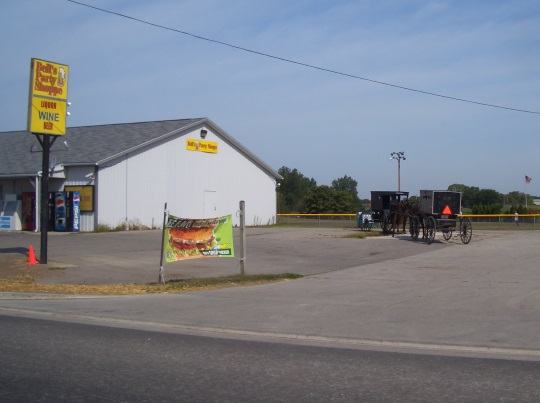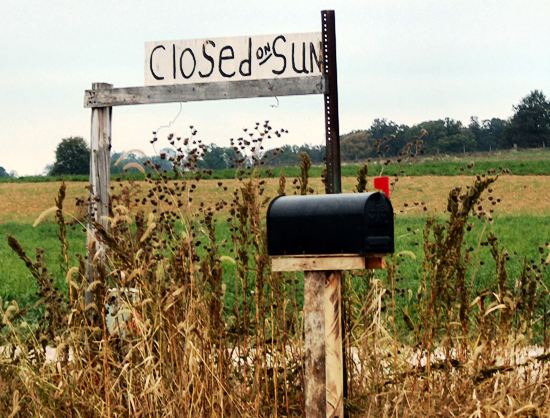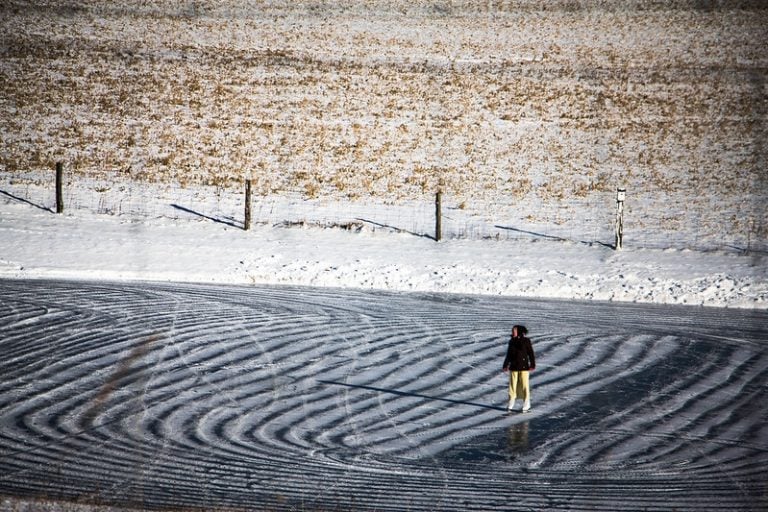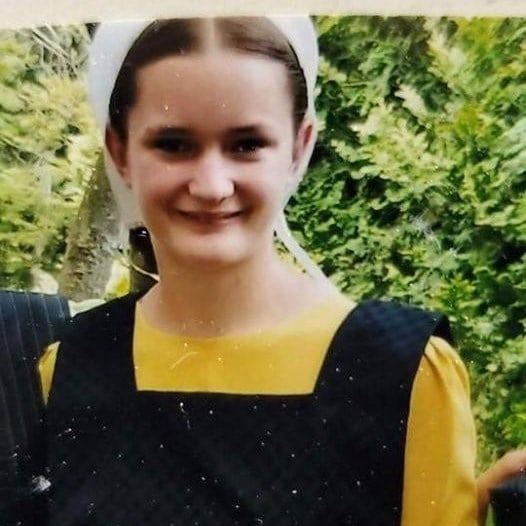Jim Cates: The Challenge of Finding Amish Alcohol Program Leaders
In a community that values outward uniformity, it can take some courage to stand out.
 In today’s post, Serving The Amish author Jim Cates details the challenge of recruiting Amish leaders to help guide a fledgling alcohol program for Amish adolescents.
In today’s post, Serving The Amish author Jim Cates details the challenge of recruiting Amish leaders to help guide a fledgling alcohol program for Amish adolescents.
As Jim describes below, finding those leaders wasn’t easy–but was pivotal to the program’s success or failure.
—
It Was Such a Clever Idea!
As a psychologist, I spend a portion of my time administering intelligence tests. So let me begin this post with a simple one to assess your abilities. Which of the following combinations does not belong together? Ready? Peaches and cream. Oreos and milk. Cheeseburgers and fries. Amish and innovations.
If you chose Amish and innovations you are extremely intelligent, based on this limited quiz. And I also need to be careful about writing when I’m hungry, but I digress.
Actually, as any regular reader of Amish America knows, it is a prejudicial oversimplification to say “Amish and innovations” do not belong together. It is fair to say however, that innovations are much more slowly studied, considered, and welcomed (if at all) than they are by mainstream culture counterparts.

So as a group of us took on the daunting task of creating an alcohol education program for Amish adolescents in the Elkhart-LaGrange area, we were keenly aware that we were peering down the muzzle of over 300 years of tradition that could easily explode in our faces if we were not careful.
And yet one idea appealed to us quickly and readily. Existing programs placed Amish youth arrested on alcohol possession or consumption charges with English youth, in English programs. Accordingly, what they learned and what they experienced was, in their perception, “of the world.” They failed to internalize the information, the lessons, or the emotional experience.
We could offer programs limited to Amish youth, but that was only a partial solution. English professionals leading the groups would, in their view, still create an “English” program. Our dilemma became how to make it an Amish program they could internalize and use.
The solution was inspired, an “Aha!” moment that was an answer to prayer. If the groups were co-led by Amish and English leaders, they had the potential to “be” Amish. Wonderful! Problem solved! Now, just one obstacle, looming like the Rocky Mountains in our path. Where could we find Amish leaders?

We preferred young adults who could relate to our adolescent group members. That worked for us in two ways. First, they were less likely to have large families to tie them to other responsibilities. Second, they were less likely to have the watchful eye of the community reminding them of their place, and thus have internalized the strict values of tradition.
And yet, we faltered at every step. Repeatedly we approached potential candidates who heartily approved of the plan. We were told again and again it was a wonderful idea. And again and again no one was willing to take the risk of actually being a co-leader. What if the bishop disapproved? What if family was unhappy? What if the church looked askance? What if the community found fault with the classes, and they had been involved?
We were closer and closer to starting the program. A curriculum was in place, we had English professionals lined up, and the tacit support of the Amish community was behind us. And yet we still lacked Amish co-leaders. No one, it seemed, was willing to be the first to step out and risk the censor that could occur. We had a good plan, but one that might never be implemented unless we could find someone with the courage to step out on faith.
And then we were given the names of two young adult men. They both taught school, and were good friends. They were well-respected by peers and elders alike, well-liked by their students, and admired by the parents whose children they taught. If we could get them, the quiet but supportive voices whispered in our ears, we would indeed have a coup.

And if wishes were horses we all would ride, I thought pessimistically. I had been down this road too many times before only to hear “Wonderful idea! Hope you find someone!” Nevertheless, I started the series of calls back and forth to phone shacks (no surreptitious cell phones here) and arranged a meeting at one of their schools on a fall afternoon.
I found them everything I had been told. They were intelligent, far-sighted, introspective, and charming young men. They also held a deep concern for the youth of their settlement. They listened closely to the plan, and thankfully, did not immediately say “no.” However, also in typical Amish fashion, they gave no hint whether they would seriously consider our plan or not.
At that point I was as desperate as a long-tailed cat locked in a roomful of rockers. What I meant to do was casually suggest a second meeting with the English professionals who would be leading the group. Looking back, it seems like I was on my knees, tears streaming down my cheeks, pleading with them to meet with our professionals. Whatever the truth of that incident, they agreed politely. The second, expanded meeting occurred, and the chemistry was there between English pros and potential Amish co-leaders. To my relief, they said yes.
And the rest, as they say, is history. Take-off was not the smoothest that has ever been achieved, but our program was airborne. And after a time, our first two co-leaders signaled their weariness, and asked to be relieved. They assisted us by meeting with potential Amish replacements, greatly smoothing the path for future leadership to work with us from within the community, a collaboration that continues to this day, almost ten years later.
And where are these two courageous young adults now? Both married, both with children, and both leaders among the Amish. In keeping with their humility, I know they prefer I not use their names or otherwise identify them any more than I already have. Still, their willingness to take a risk, their compassion, and their advocacy for youth is a gift that has meant so much for so many across the years. Thanks fellas. Couldn’t have done it without you.
Jim Cates is the author of Serving the Amish: A Cultural Guide for Professionals. He can be contacted through this blog or his website at servingtheamish.net.








Of course right after we publish this, I come across this story from yesterday on an underage keg party in an Amish settlement in Missouri. Jim, any youth alcohol programs like yours in Missouri?
——————————————————-
http://www.kmzu.com/amish-minors-alcohol-party-busted/
According to a press release by the sheriff’s department, the allegations also state the minors are members of the Amish community. After searching the property in northwest Livingston County, 5 mostly empty beer kegs were discovered, as well as much alcohol related litter.
Authorities have made contact with some of the youth who reportedly admitted to attending the party, as well as their parents. The Amish minors are required to clean up the area where the party was held and apologize to the land owner.
I'm Shocked!
Shocked, I tell you! Shocked! Amish youth acting like normal teenagers? It stuns me. Okay, teasing aside, one of the struggles we have faced among the Amish is the difference in attitudes. Some Amish parents see a partying phase as a “rite of passage,” and are less concerned that their children are involved. Others are deeply troubled by it, and want their children to follow, not only the law, but a respect for themselves and others in what they do. There are points to be made for both sides. “Growing up” is not just about doing the right thing, but learning the consequences for actions. That is where having young adult Amish leaders in the alcohol education classes is so helpful. Whether they engaged in alcohol-use behaviors or not, they can guide these youth in a way that we never can, because of their “in culture” experience.
Can I ask as a follow-up, given that you mentioned that the original two leaders are no longer there but helped you find successors, how difficult is it to find new leaders? Do you draw on former program participants?
And also curious, what is the support level in the community today for this program?
The Challenge
Amish leadership in the program has hit periods of stability and periods of transition. To the best of my knowledge, none of the “participants” have returned to lead yet – but there is always time. The community remains supportive of the effort, in part because parents realize there youngie will be sent to a program somewhere, and we are the only “all-Amish” program in the area. Our original intent was to do a model program, have other mental health/drug and alcohol providers in the area build on the model, and fade ours out of existence. Just didn’t happen. Other providers continue to offer English-based alcohol programs that emphasize non-Amish models for alcohol (and drug) use, worldly attitudes, and a general lack of awareness of Amish culture. I wish it wasn’t true, and I desperately hope some of their leadership is reading this blog!
Jim, Erik,
thank you for the continuing articles on this important resource.
I think I remember a post years ago detailing the notion/fact that the Amish, baptized members, do partake in ‘strong drink’, often either as something to drink in the summer or in the winter to fortify ones self against the cold (perhaps not while working, maybe at a meal, I forget, likely and certainly not during church meeting meals I’d imagine).
Or perhaps I am away off in this… surely I’d imagine that baptized members would probably severely limit their consumtion of alcolhol, what says everyone?
Strong Drink...
I sincerely hope someone Amish weighs in on this too. My experience has been that a little schnapps is used for cold/flu symptoms, and I know of women who use an “arthritis remedy” that consists of vodka that has been soaking in raisins (just a teaspoonful every morning). I believe the use of alcohol as a social beverage is largely frowned upon, but there are a few settlements that allow it. And I know of the occasional Amish man who will pop one or two beers after a long day putting up hay in the dog days of summer, even in settlements that frown on it. At least – that’s my Indiana experience. And I would agree – I’ve never heard of it being served after church.
Strong Drink
Is very frowned upon to do any type of drinking alcohol. It is always mentioned in church with the rules that we shall not drink. Having it like Jim says is permissible and harmless.
And even if you “worldly guys” think the Amish parents look the other way…so to speak, and hope they get thru their rumspringa fast…and these parents are in bed sleeping and oblivious…well, I can talk for 95% of our area, (N. IN) WE DO CARE!!! WE do pray and cry and explain to the children…what can happen. What you get from the troubled teenagers can be a biased “shrugging it off thing”
To Slightly Handled… OH MY, NOT in church, and not very likely in the home.
You said that very well, Mary! I totally agree, and as a parent to teens, I know just what you are saying. We DO care — very much.
Caring About Teens
In response to both Mary and Mark – Amish, English, or anywhere in the world, I do believe – the struggle of how to respond to adolescent behaviors is so very complex. It is an age when at least part of their learning will be by their mistakes. And I still don’t think it’s an accident that my hair started turning gray when my son started driving. As a parent, I sympathize completely with the struggle to make a stand on adolescent alcohol use. Forbid it, knowing at least some will drink anyway? Tolerate it, at least to some extent, and worry nonstop? I don’t believe in a “right” answer as much as I believe in parents finding what they feel is right for their children. As a substance abuse educator however, the problem becomes collecting a group of youth whose parental values range from “don’t ever, ever drink” to “drink responsibly,” and trying to find a way to teach this mixed class without offending. We try to do so with a “harm reduction” model. That idea says they are too young to drink, but if they insist on doing so, they should do it responsibly. Now if you’ll excuse me, I’ve got to go get a nap. I’m still catching up on lost sleep from my son’s teenage years…
Eric: Do you know if there is a program like this in Lancaster?
Good question, I’m going to yield to Jim though and hope he might have an answer.
Programs in Lanc
Tom – Since Erik has punted this one over to me, I’ll answer with the disclaimer that I am not up on the most recent work that’s being done in Ohio or Pennsylvania. That said, I know there have been alcohol and drug education programs in other areas that were designed exclusively for Amish youth. Whether they are still running, I can’t tell you. However, they were run by English professionals. What has made our program different is the use of Amish co-leaders. I’m not trying to brag, but what we have found is that youth leave our program, go back into the Amish community, and they have young adults with whom they have formed a relationship. They can talk if they need to talk. And that is a blessing that would not exist if we didn’t have Amish co-leaders. We have done the hard research. Our program is effective in changing attitudes and knowledge about alcohol and other drugs, and the research was published in a peer-reviewed addictions journal.The reason I harp on this is because I truly believe in working within the Amish community as much as possible to address these issues, and I just don’t see it being done. Professionals in the alcohol and drug community don’t want to risk something radically new. My concern is that ultimately then, Amish youth suffer. (Can you tell my dad was a Baptist minister? I sat through one too many sermons. Sorry to get going!)
Jim: Thanks for the response. I was interested I n your program as I’m looking for ways to give back in recovery
Reply to Tom
Tom – always good to hear people in recovery who see a part of that process as “paying forward.” If you want start the process to backchannel me with further thoughts, you can reach me through the “Serving the Amish” website (end of the post) or through my business website – http://catesandassociates.us. Take care.
Thanks again Jim. I will be in contact
help
Jim~
Hello,
I’m writing to you out of sheer desperation. I was wondering if you had ever heard of any of the Amish people taking in a troubled & challenging young adult, to help give her some core values and ethics, but not necessarily to join the Amish?
Here’s my dilemma:
My daughter who will be 18 In Aug. and has had emotional/behavioral issues her whole life. I’ve taken her to numerous specialists, treatment centers, therapists and nothing changes. She has been in the counties care for the last 2 years and they have had worse outcomes than I did. She is currently in Regional Juvenile Detention Center in Lino Lakes, MN for the simple reason that she would not follow the counties rules and had an open criminal case, so they used that to “contain” her till she’s 18 and they don’t have to deal with her any longer. Her doctors have suggested she have a guardian, but the county wants no part of it.
I guess I just wondered if you think there might be a family that would be willing to help us??
Wilderness Way Girls Camp School
Kirsten,
Wilderness Way Girls’ Camp School in Fair Play, South Carolina has some Mennonite involvement. Maybe they would have a suggestion for you.
help...response
Kirsten,
This is an issue I’m more comfortable discussing backchannel. You can contact me either through the “Serving the Amish” website mentioned at the end of the post, or through my professional website: http://catesandassociates.us. Be glad to discuss these issues with you in that more confidential setting. Take care.
A generation ago, the drinking age was 18, and police generally had better things to do than arrest teens for drinking. In virtually all the rest of the world, no one is going to bat an eye, let alone call the cops on, a group of 17 or 18 year olds drinking, unless there was some other issue with them as well.
Part of the problem is that we infantilize teenagers while the Amish do not. At the same time, the war on drugs has led some to believe that we can arrest our way out of any social problem.
I basically abhor drunkeness by anyone. But arresting teens is clearly not the best way to address the issue.